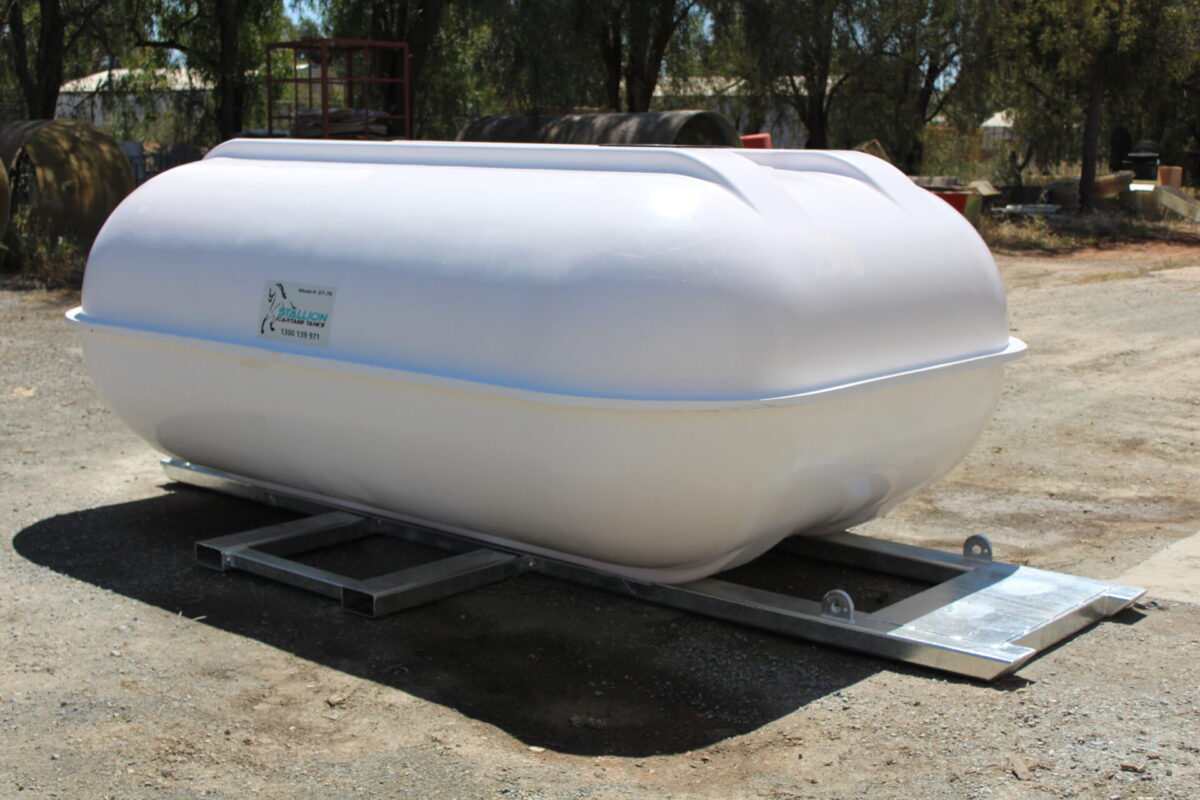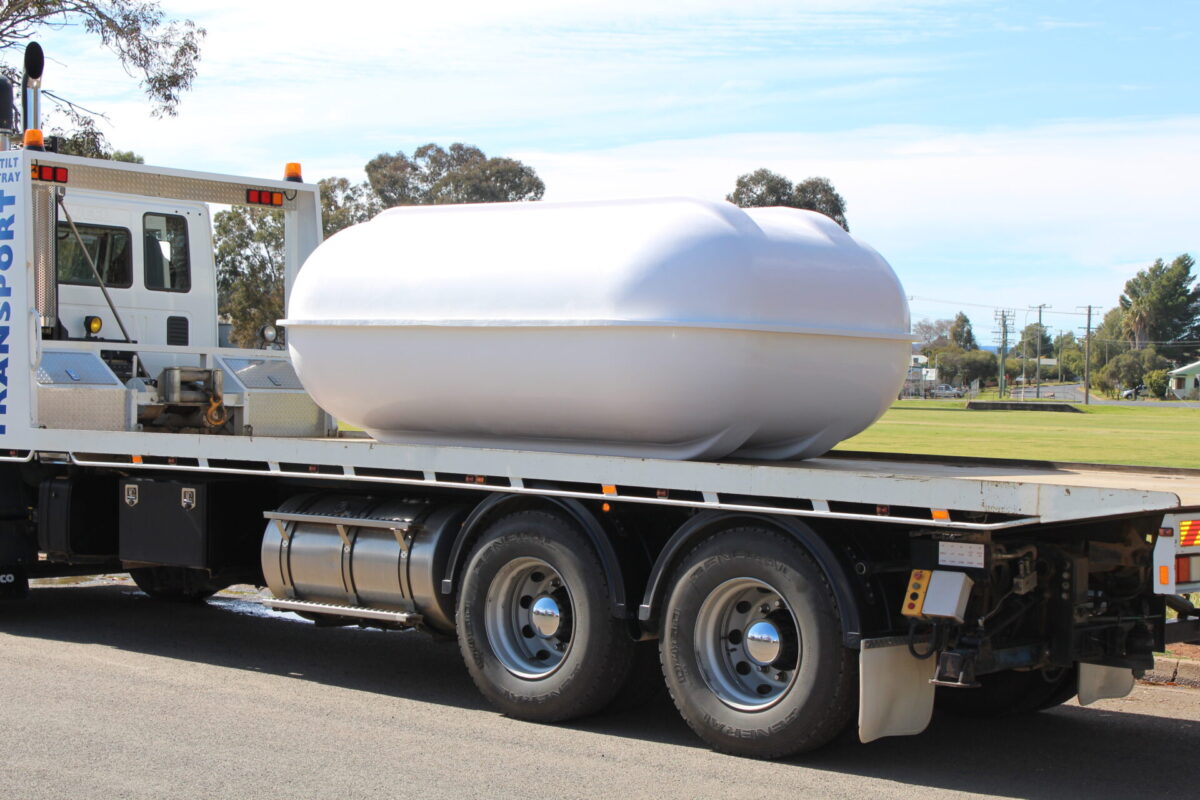Posted on 09/09/2025
In Australia, cartage tanks are relied upon in industries as diverse as agriculture, mining, construction and local government services. They keep remote communities supplied with potable water, help control dust on unsealed roads, and allow operators to move essential liquids safely and efficiently.
In recent decades, fibreglass reinforced plastic (FRP) has emerged as a superior alternative to traditional steel tanks. Combining the lightness of composites with the durability needed for industrial transport, FRP has become the material of choice for businesses seeking long-term reliability. CSG Composites has spent over half a century engineering FRP transport tanks that outperform traditional designs in durability, safety, and versatility to make them the ideal fit for water cartage tankers.
What Sets FRP Water Cartage Tanks Apart?
FRP is created by embedding strong glass fibres within a tough resin matrix. This results in a material that is lightweight, corrosion-resistant, and exceptionally durable. Unlike steel, FRP does not rust, and unlike polyethylene tanks, it can withstand heavy-duty use over many years.
These properties make FRP an excellent match for transportable water tanks. Long road conditions, repeated refilling, and exposure to Australia’s harsh climate place enormous stress on cartage tanks. FRP meets these demands while reducing the operational costs associated with maintenance and fuel use.
Explore Why FRP Beats Steel & Concrete in Harsh Environments.

FRP vs Steel: A Practical Comparison
When choosing between FRP and steel, operators often weigh cost against durability. Steel tanks are strong, but they are also heavy, which increases vehicle loads and fuel consumption. Welded seams can weaken under vibration, eventually leading to leaks. Most critically, steel corrodes when exposed to water or chemicals. This point especially is a major limitation in industries where tank failure can halt operations.
FRP avoids these pitfalls. It is significantly lighter, which means lower running costs and less strain on trucks and trailers. The seamless construction of fiberglass cartage tankers also reduces the chance of leaks, and because it is non-corrosive, it retains structural integrity far longer than steel. Over the life of a fleet, these advantages translate into higher uptime and a stronger return on investment.
For example, a mining operator replacing steel tanks with FRP could expect reduced maintenance downtime and fuel savings, based on the lighter weight and corrosion resistance of FRP. This kind of long-term efficiency is where FRP proves its value.
Applications of FRP Transportation Cartage Tanks
The versatility of FRP has made it indispensable across several industries:
- Potable water transport: FRP tanks are smooth and non-reactive, ensuring compliance with Australian Standards for drinking water storage and delivery. This makes them safe for supplying communities and work camps with clean water.
- Dust suppression: On mine sites, haul roads and construction projects, FRP tanks paired with spray systems provide reliable dust control, reducing health and safety risks for workers.
- Chemical transport: FRP’s corrosion resistance allows it to carry many industrial chemicals safely, where steel would fail prematurely.
- Agriculture: Farmers rely on FRP cartage tanks to move water to livestock or crops in areas where permanent infrastructure does not exist.
This wide application range explains why FRP has steadily replaced steel in transport fleets across the country.
Explore our full range of transportation tanks here.
The Stallion Series: Built for Australian Roads
Among CSG Composites’ range, the Stallion cartage and dust suppression tanks are a benchmark in FRP engineering. Developed for Australia’s demanding conditions, they are designed to withstand constant vibration, unsealed roads, and high-volume usage without compromising on safety.

Available in capacities suited to both small operators and large industrial fleets, Stallion tanks can be mounted on trailers or truck chassis and configured for multiple uses. Their FRP construction ensures durability, while their lighter weight compared to steel improves fuel efficiency across long haul routes.
View Stallion Cartage Spray Tanks.
Should You Buy Second-Hand Tanks?
Some buyers are tempted by second hand water cartage tanks for sale, attracted by a lower purchase price. While these tanks may be serviceable, they carry inherent risks. A used steel tank, for instance, may already be corroded or close to structural failure. Even with fibreglass tanks, unseen damage or previous non-compliance with potable water standards could compromise safety.
In contrast, a new FRP tank offers assurance of longevity and compliance. For businesses where downtime is costly, the long-term savings from reduced repairs and guaranteed reliability generally outweigh the initial investment.
Benefits in Summary
While the advantages of FRP can be explained at length, the core benefits are clear:
| Feature | FRP Transport Tanks | Steel Tanks |
|---|---|---|
| Corrosion Resistance | Rust-proof | Prone to rust |
| Weight Efficiency | Lighter, saves fuel | Heavy load |
| Leak Prevention | Seamless design | Weld seams can fail |
| Potable Water Safety | Compliant & safe | Risk of contamination |
| Service Life | Long-lasting | Shorter lifespan |
When Steel May Still Be Chosen
Although FRP has clear advantages, there are limited situations where steel tanks remain in use. In cases where extremely high pressures are required, or where a tank will be permanently installed rather than transported, some operators still opt for steel due to familiarity or initial cost considerations. However, these cases are becoming increasingly rare as FRP technology advances.
Why Choose CSG Composites
With over 5 decades of expertise, CSG Composites is a leader in FRP transport tanks across Australia. Our tanks are:
- Designed and built locally to withstand Australian conditions.
- Customisable to your site, road, and trailer requirements.
- Backed by experience in mining, agriculture, and industrial sectors.
Contact our team today to discuss the right cartage tank solution for your needs.
FAQs About FRP Cartage Tanks
How long do FRP cartage tanks last?
With proper maintenance, FRP tanks can last decades, significantly outliving steel tanks exposed to corrosion.
Can FRP tanks carry potable water?
Yes. CSG Composites’ tanks are designed for potable water transport and meet Australian Standards for drinking water safety.
Are FRP tanks suitable for chemicals?
Yes. FRP is resistant to many industrial chemicals, making it versatile beyond water transport. Always check compatibility with specific liquids.
For Transport of Hazardous Chemicals – Explore our Ultim Transport Tanker.
Are FRP tanks more expensive than steel?
Upfront, yes, but lower maintenance, reduced fuel consumption and longer service life make them more cost-effective over time.
What sizes are available?
CSG Composites manufactures tanks in a wide range of capacities, suitable for small farm operators through to large industrial fleets.
The Future Belongs to FRP
In industries where reliability is critical, FRP cartage tanks provide a safer, stronger and more economical solution than traditional steel. From potable water supply to dust suppression and chemical transport, FRP combines durability with compliance in a way that steel simply cannot match.
CSG Composites continues to lead innovation in FRP technology, helping operators across Australia transport vital resources with confidence.
Contact our team today to discuss your project or request a quote.
Written by the CSG Composites Team
Industry Success
Client Testimonials
Scott Morris,
Radium
“It’s their knowledge of composites and FRP, the materials, the resins. It’s the experience they bring to the table with knowing the right compounds to put together is what makes the difference”
Jim Kelly,
Arris
“CSG Composites were very good to us as they were able to meet the short lead time and have the tanks ready to go”
